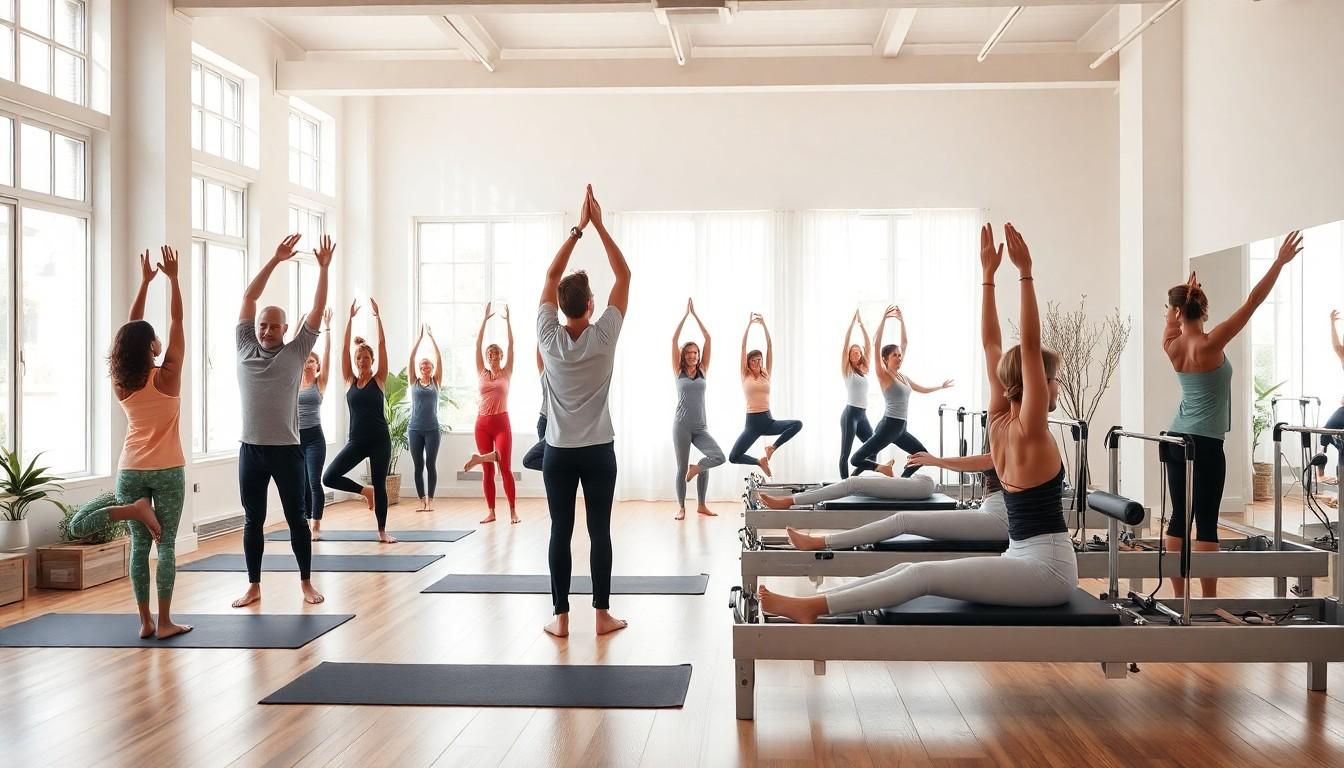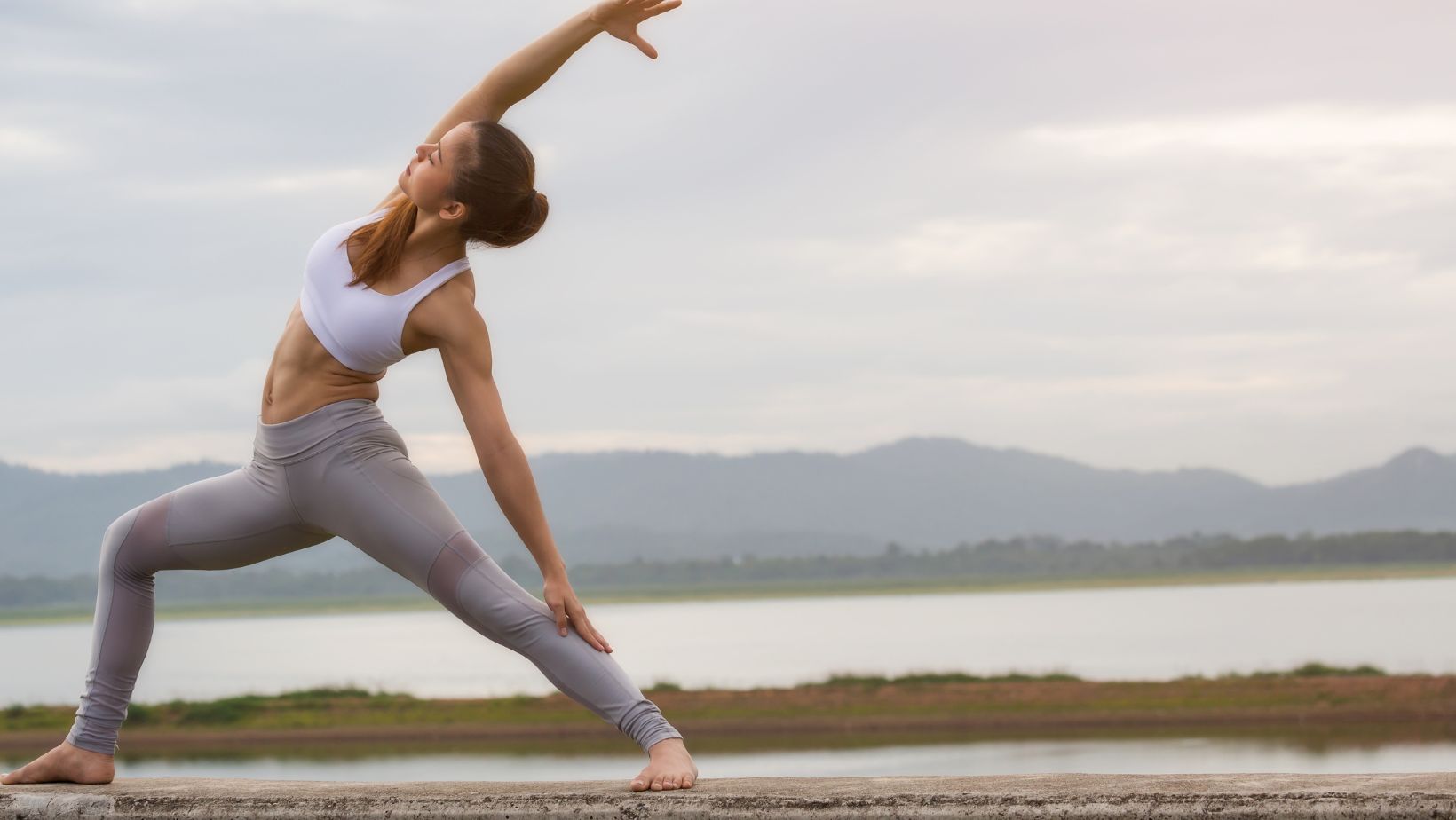In the quest for the perfect workout, many find themselves tangled in the age-old debate: is yoga and Pilates the same? While both promise to tone your body and calm your mind, they each bring their own flair to the fitness table. Imagine yoga as that serene friend who’s always down for a good stretch and a deep breath, while Pilates struts in with a reformer machine and a mission to sculpt those abs like a Greek god.
Is Yoga And Pilates The Same
Yoga and Pilates focus on physical and mental well-being but have distinct practices and principles. Each method offers unique benefits, catering to various fitness goals.
Definition Of Yoga
Yoga is a practice that combines physical postures, breathing techniques, and meditation. Originating in ancient India, its primary purpose lies in achieving harmony between mind, body, and spirit. Poses, known as asanas, encourage flexibility and balance. Breathing exercises, or pranayama, promote relaxation and mindfulness. Different styles, including Hatha, Vinyasa, and Ashtanga, cater to individual preferences and fitness levels. Practitioners often experience reduced stress and increased awareness through consistent practice.
Definition Of Pilates
Pilates, developed by Joseph Pilates in the early 20th century, emphasizes core strength and muscular endurance. This method improves body alignment and flexibility through controlled movements. Mat-based or equipment-based Pilates utilizes tools such as reformers and resistance bands for enhanced workouts. Each exercise targets specific muscle groups, focusing on stability and coordination. Many practitioners appreciate its supportive benefits for rehabilitation and overall body conditioning. The practice often attracts those seeking a strong core and improved posture.
Key Differences Between Yoga And Pilates

The focus and philosophy of yoga and Pilates distinctly shape their practice. Yoga embodies a holistic approach, aiming for spiritual balance and mental clarity. Breathing techniques and mindfulness deepen the connection between body and mind. Practitioners often seek emotional well-being through this meditative process. Pilates, on the other hand, prioritizes physical fitness and core strength. Controlled movements enhance muscle tone and overall body alignment. Its purpose remains largely physical, with less emphasis on spirituality but a broad focus on functional movement.
Types of exercises in yoga and Pilates also diverge significantly. Yoga classes often include a variety of postures that promote flexibility and relaxation. Sequences can vary greatly, allowing practitioners to explore various styles such as Hatha or Vinyasa. Each session typically incorporates holds and gentle movements. Pilates emphasizes repetition and precision, targeting specific muscle groups. Equipment like reformers and resistance bands aids more dynamic routines. Exercises often focus on core stability and strength, making sessions feel more structured and less fluid than yoga.
Similarities Between Yoga And Pilates
Both yoga and Pilates share common elements that appeal to many practitioners. They emphasize good posture, body awareness, and controlled movements.
Mindfulness And Breath Control
Mindfulness plays a critical role in both practices. Yoga promotes mindfulness through meditation and specific breathing techniques, enhancing the mind-body connection. Similarly, Pilates incorporates focused breathing to support movement, facilitating muscle engagement. These methods help practitioners cultivate awareness of their bodies while increasing concentration. Both practices utilize breath control to reduce stress and improve overall mental clarity.
Benefits For Physical Health
Physical health benefits emerge from both yoga and Pilates practices. They contribute to improved flexibility and balance, essential for overall well-being. Each method effectively strengthens core muscles, offering support for daily activities. Pilates specifically targets abdominal and back muscles to enhance stability. In parallel, yoga fosters strength through various postures, promoting muscle tone. Practitioners often notice improved posture and reduced tension in both disciplines, positively impacting physical health and quality of life.
Which One Is Right For You?
Choosing between yoga and Pilates depends on individual goals and fitness levels. Yoga appeals to those seeking relaxation, spiritual balance, and mindfulness. Alternatively, Pilates attracts individuals focused on core strength, stability, and body sculpting.
Personal Goals And Preferences
Identifying personal goals helps determine the right practice. For stress relief and emotional well-being, yoga offers various styles like Hatha or Vinyasa, which promote calmness and flexibility. On the other hand, Pilates targets fitness enthusiasts aiming for toned muscles and improved alignment through controlled movements. Practitioners focused on rehabilitation may benefit more from Pilates, while those wanting a holistic experience might lean towards yoga. Evaluating fitness preferences ensures a suitable choice between the two.
Recommendations For Beginners
Starting with yoga or Pilates involves understanding your body and fitness level. Beginners may find gentle Hatha yoga classes beneficial for learning postures and breathing techniques. These classes provide an introduction to the practice without overwhelming complexity. Conversely, newcomers to Pilates should consider beginner reformer classes to familiarize themselves with equipment and core-focused exercises. Such classes offer a strong foundation while emphasizing proper alignment and movement precision. Both options cater to those exploring their physical capabilities and enhancing body awareness.
Understanding the distinctions between yoga and Pilates can help individuals make informed choices about their fitness journeys. Each practice offers unique benefits tailored to different goals. While yoga promotes mental clarity and emotional balance through its meditative approach, Pilates emphasizes core strength and physical conditioning.
Choosing the right practice ultimately depends on personal objectives and preferences. Whether one seeks relaxation and mindfulness or a dynamic workout focused on body sculpting, both yoga and Pilates provide valuable tools for enhancing overall well-being. Engaging in either practice can lead to improved physical health and a deeper connection to one’s body.

